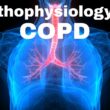COPD (Chronic Obstructive Pulmonary Disease)
Exposing the Enigma: Contributory Factors to the Development of COPD
Chronic obstructive pulmonary disease, or COPD, is a lung disease that progresses over time and is frequently brought on by a number of risk factors. Even while some of the elements are well-established, others might be more subtly important. You can potentially lower your risk of having COPD by being aware of these hazards and using that knowledge to make educated decisions.
Table of Contents

The infamous offender: tobacco use
COPD (Chronic Obstructive Pulmonary Disease)
Almost 70% of COPD cases are caused by smoking, making it the primary risk factor for the disease. Your lungs suffer greatly from the dangerous substances in cigarette smoke in a number of ways:
- Inflammation and irritation: Smoke causes the airways to become irritated and inflamed, which can result in chronic bronchitis, a kind of COPD marked by narrowed and inflamed airways.
- Damage to air sacs: Smoke causes harm to the lungs’ fragile alveoli, which makes it more difficult for them to exchange carbon dioxide and oxygen. Emphysema is a condition that is associated with COPD.
- Impaired lung function: reduced lung capacity Breathing becomes difficult as smoking weakens and diminishes the function of the lungs over time.
The length of time and number of cigarettes smoked both raise the risk of COPD. The most crucial thing you can do to either prevent COPD or, in circumstances where it already exists, decrease its course is to stop smoking.
Air Pollutant Exposure: Beyond Smoking
COPD (Chronic Obstructive Pulmonary Disease)
Although smoking is the main cause of COPD, exposure to air pollutants can also cause the disease or exacerbate already existing instances. Among these contaminants are:
- Traffic fumes: When cars exhaust, they release particulate matter (PM2.5) and nitrogen dioxide, which irritate the lungs and cause lung damage.
- Industrial emissions: Sulfur dioxide and volatile organic compounds (VOCs), which can harm lung tissue and worsen the symptoms of COPD, are released by factories and other industrial facilities.
- Bystander smoking: Similar to direct smoking, secondhand smoke exposure dramatically raises the risk of COPD.
- Indoor air pollution: Burning wood or coal, or other biomass fuels, for cooking or heating in an area with inadequate ventilation can generate smoke and particle matter, which aggravates COPD.
This risk can be lessened by reducing exposure to air pollution by staying indoors on days with high pollution, utilizing air purifiers, and supporting cleaner air programs.
Workplace Dangers: Breathing Issues
COPD (Chronic Obstructive Pulmonary Disease)
People who work in some industries are exposed to chemicals, dust, and fumes that can harm lung tissue and raise the risk of COPD. Among the instances are:
- Mining: Black lung disease, a kind of COPD, can develop in coal miners as a result of the dust from coal mines.
- Construction work: Dust from materials such as asbestos, silica, and concrete can be inhaled by construction workers, causing lung damage.
- Chemical manufacturing: Chemical factory workers may be subjected to a variety of toxic vapors and chemicals that can cause lung tissue irritation and damage.
- Textile workers: Byssinosis, a disease with symptoms like COPD, can be brought on by exposure to cotton dust.
Reduce exposure to these occupational risks dramatically by using appropriate personal protective equipment (PPE) when working in high-risk environments and by supporting better ventilation systems.
The Genetic Effect: A Matter of Family
COPD (Chronic Obstructive Pulmonary Disease)
Genetics may contribute to a person’s propensity for COPD even though it is not a direct cause. Alpha-1 antitrypsin deficiency (AATD) is a rare genetic disorder that can substantially raise the risk of COPD, particularly in smokers.
The liver produces the protein known as AAT, which shields the lungs from the harm that enzymes might cause. Due to a protein shortage, those who have AATD are more susceptible to the negative effects of smoking and other irritants on their lungs.
Genetic testing can assist in identifying those who have AATD, enabling an earlier diagnosis and possibly preventative actions.
Early Contacts: COPD and Respiratory Infections
COPD (Chronic Obstructive Pulmonary Disease)
Early life events, such as recurrent respiratory illnesses as a kid, may be associated with a higher chance of developing COPD in later life. These infections increase the risk of getting COPD in adulthood by harming growing lungs and impairing lung function.
COPD (Chronic Obstructive Pulmonary Disease)
Although the precise relationship between childhood respiratory infections and the development of COPD is not entirely understood, it may be mitigated by receiving appropriate medical attention for childhood respiratory illnesses and limiting exposure to respiratory irritants such as secondhand smoke.
Taking Charge: Reducing Your Hazard
COPD (Chronic Obstructive Pulmonary Disease)
Being aware of the COPD risk factors gives you the ability to manage your lung health. What you can do is as follows:
COPD (Chronic Obstructive Pulmonary Disease)
- Quit smoking: The most crucial thing you can do to prevent or reduce the course of COPD is to give up smoking.
- Minimize exposure to air pollution: Reduce your exposure to air pollution by staying home during high pollution days, using air purifiers, and supporting projects aimed at creating a healthier atmosphere.
- Defend yourself at work: In high-risk workplaces, use the appropriate personal protective equipment (PPE) and push for better ventilation systems.
- Get tested for AATD: Consider getting tested for AATD genetically if you have a family history of early-onset disease or COPD.


